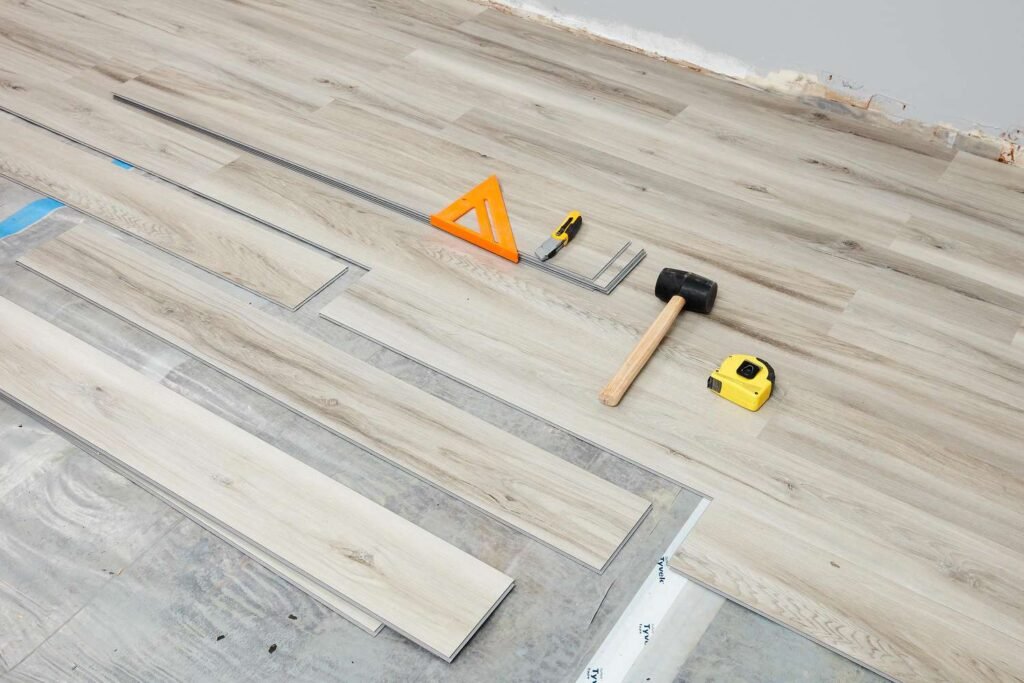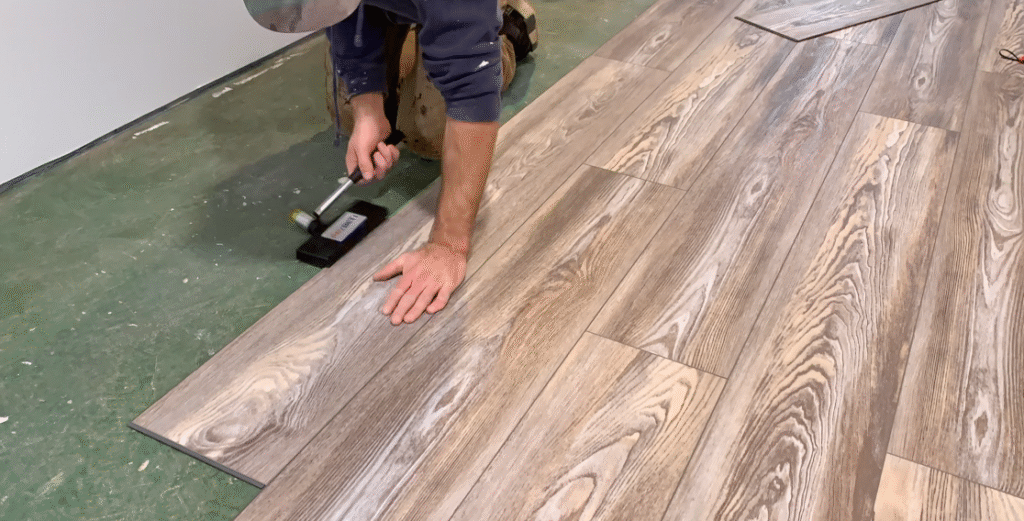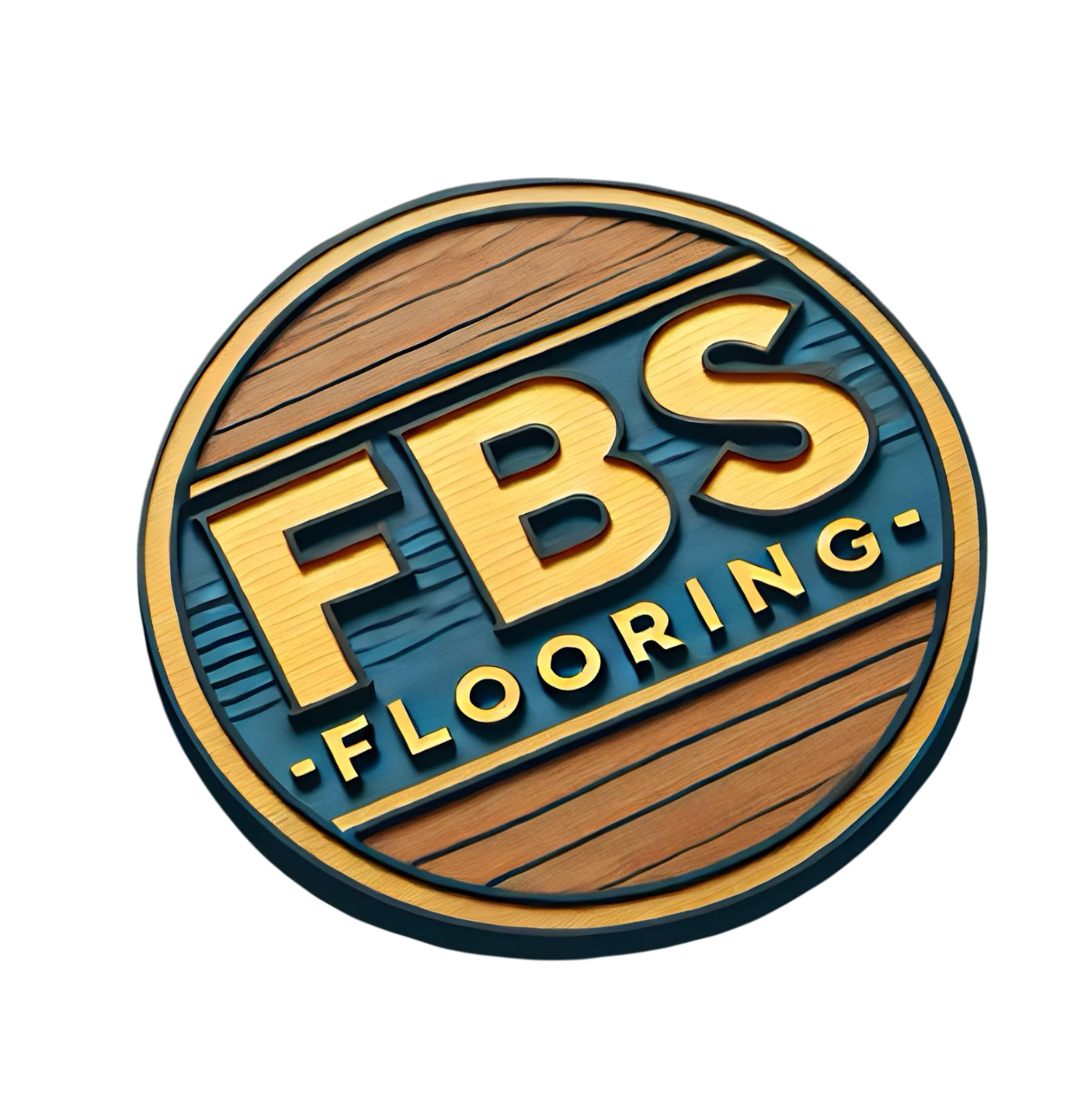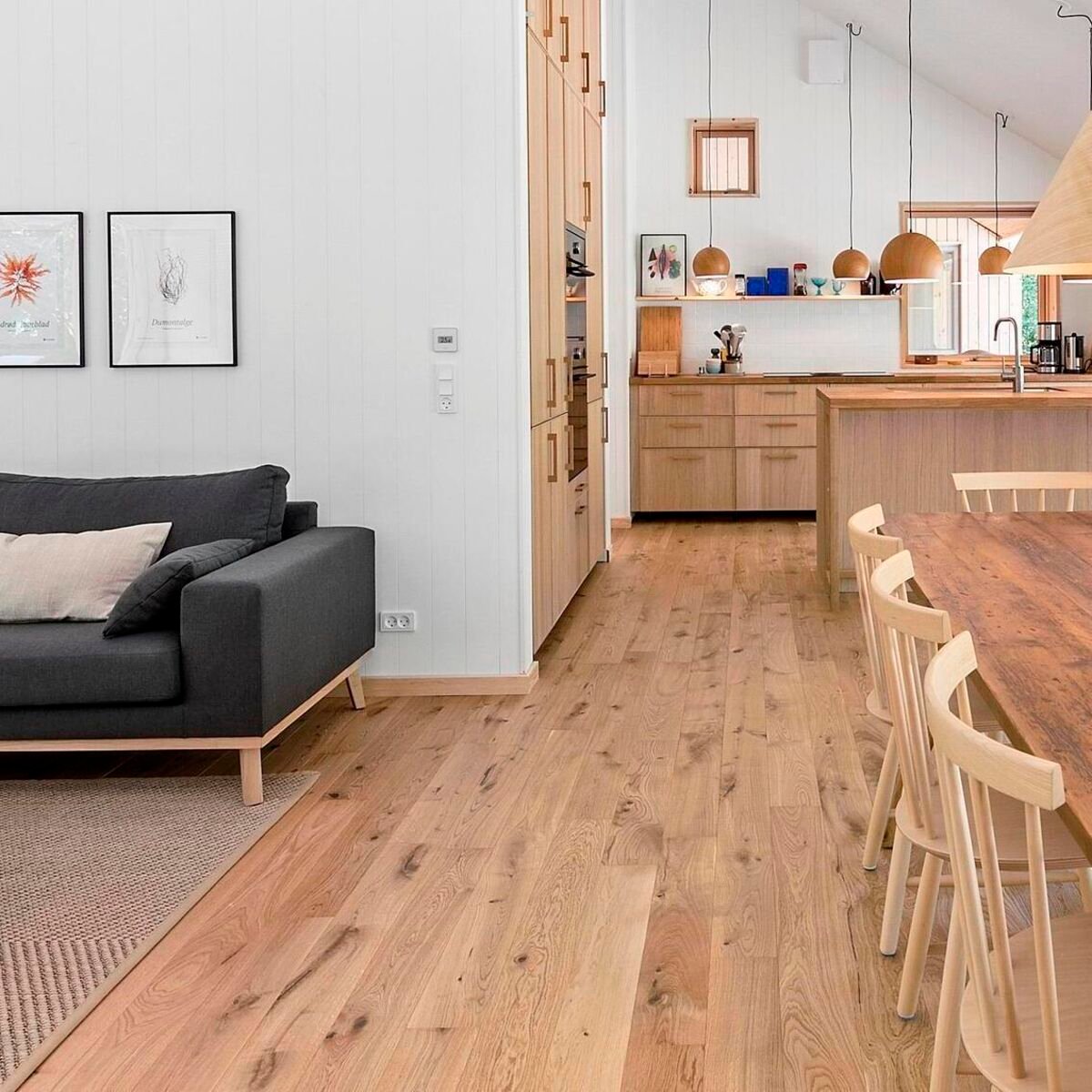Why a Definitive Irish Flooring Guide Matters
Flooring is one of the first things you feel in a space and the last thing you want to redo. In Ireland, where humidity, driving rain, and older subfloors are common, choosing the right floor and installing it correctly determines comfort, durability, and long-term cost. The wrong choice can lead to cupping, gapping, noise, premature wear, or outright failure.
This guide goes beyond surface-level “pros and cons.” It explains how Irish conditions affect your decision, what proper subfloor and moisture control look like, how to budget realistically, and how to hire a contractor who will stand over their work. Whether you’re renovating a Dublin terrace, finishing a Cork extension, or refitting an office in Galway, you’ll find practical steps to get it right.
Snapshot of the Irish Flooring Landscape
- Renovations and retrofits continue to dominate, often blending engineered wood upstairs with LVT/SPC or tile on moisture-exposed ground floors.
- Commercial and public projects lean toward performance surfaces, vinyl sheet, carpet tiles, safety flooring, and rubber specified for slip resistance, hygiene, and fire ratings.
- Sustainability demand is growing: low-VOC adhesives/finishes, FSC/PEFC timber, Environmental Product Declarations (EPDs), and durable products that truly last.
- Hybrid buying journeys: people shortlist online (photos, videos, reviews), then expect in-home surveys, samples, and transparent quotations.
Bottom line: Success comes from matching room use + moisture profile + installation method, then documenting the process with clear warranties and aftercare.

Flooring Types & Their Suitability in Ireland
Engineered Wood (vs Solid Hardwood)
Best for: lounges, bedrooms, hallways, upstairs spaces, and many UFH setups.
Why it works in Ireland: engineered cores are more stable through seasonal humidity swings than solid wood.
- Pros: premium look and feel; can often be sanded/refinished (depends on wear layer); compatible with many underfloor heating systems (check limits).
- Cons: sensitive to standing moisture; requires acclimatisation and expansion gaps; higher cost than laminate/LVT.
- Irish tip: avoid solid hardwood in damp ground floors and basements unless you have robust damp-proofing and controlled RH.
Laminate
Best for: bedrooms, living rooms, rental properties on a budget.
- Pros: cost-effective, fast click installation, wide décor options.
- Cons: “water-resistant” ≠ waterproof; continuous moisture can cause swelling.
- Irish tip: choose quality underlay for acoustics in apartments and to soften minor subfloor variances; avoid bathrooms and laundry rooms.
LVT / SPC (Luxury Vinyl & Rigid Core)
Best for: kitchens, hallways, utility rooms, ground floors, commercial spaces.
- Pros: highly moisture-tolerant; realistic textures; click, glue-down, and loose-lay options; SPC adds rigidity over minor unevenness.
- Cons: subfloor still needs to be flat, clean and within tolerance; glue-down requires correct adhesive and conditions.
- Irish tip: an excellent choice for damp-prone areas; consider glue-down in commercial zones with rolling loads.
Tile & Natural Stone
Best for: bathrooms, wet rooms, busy entryways, and design-led spaces.
- Pros: extremely durable; easy to clean; brilliant with UFH.
- Cons: cold without UFH; needs very flat, stable substrates; movement joints and waterproofing (tanking) in wet rooms.
- Irish tip: porcelain with UFH gives year-round comfort and suits coastal mud-and-rain realities.
Carpet & Carpet Tiles
Best for: bedrooms, lounges (broadloom), offices and schools (carpet tiles).
- Pros: warmth, acoustic comfort, zoning options with tiles.
- Cons: stains, maintenance, not suited for wet areas.
- Irish tip: select stain-resistant yarns and dense pile; carpet tiles shine in commercial spaces for easy patch replacement.
Cork, Bamboo & Eco Alternatives
- Cork: soft, renewable, warm underfoot; great in bedrooms, nurseries, studios.
- Bamboo: quality varies; choose brands with proven stability and clear sustainability disclosures.
- Low-VOC, EPD-documented ranges: increasingly requested for Irish residential and commercial specs.

Underfloor Heating (UFH): What Works and What to Watch
- Compatible floors: many engineered woods, LVT/SPC, and tile. Solid wood is more limited.
- Key rules: respect maximum surface temperatures, follow heat-up/cool-down cycles, keep indoor RH within specified ranges, and use UFH-compatible adhesives/underlays.
- Irish tip: humidity swings can be significant. Protect wood floors by maintaining recommended RH (often ~40–60%) and avoiding sudden temperature jumps.
The Service Process in Ireland: From Survey to Aftercare
1) Site Survey & Consultation
Expect a measured survey covering room dimensions, subfloor type (screed/concrete/timber), door clearances, stairs, and transitions. A good contractor will discuss use case (pets, kids, footfall), acoustics, UFH, moisture risk, lead times, and budget.
Deliverable: an itemised proposal covering materials, labour, subfloor prep, trims, waste removal, and approximate timeline.
2) Subfloor Preparation & Tolerances
Most failures trace back to poor prep. Subfloors must be clean, sound, dry, and flat (typical tolerance around ±3 mm over 2 m, check product). Preparation can include self-levelling compounds, moisture membranes, patching compounds, or plywood overlays. Timber subfloors may need fixing squeaks, replacing damaged boards, and adding underlayment.
3) Moisture Testing & Damp-Proofing
Ireland’s climate demands moisture control, especially on ground floors, basements, and coastal counties. Installers should test and document RH/moisture. Where risk is present, use DPMs (damp-proof membranes), primers, tanking in wet rooms, or capped screeds. This is non-negotiable for long-term performance.
4) Installation Methods
- Floating click: engineered, laminate, some LVT/SPC fast, requires expansion gaps and suitable underlay.
- Glue-down: LVT/wood where higher stability is needed; adhesive selection and open time are critical.
- Nail/staple: solid wood over battens/ply; requires tight tolerances and acclimatisation.
- Tile fixing: correct adhesive/bed depth, decoupling membranes as needed, movement joints, and compatible grout.
5) Finishing & Detailing
For wood: lacquers, oils, hardwax oils. Detailing includes skirting, scotia/beading, thresholds, reducers, and height transitions between materials. Quality finishing is what makes floors look intentionally integrated rather than “added on.”
6) Handover, Care & Warranty
Expect a walkthrough, snag list, and written care instructions. Many warranties specify cleaning products and humidity ranges. Commercial sites often keep a maintenance log. Keep all documentation, this supports warranty claims and resale value.
Costs & Budgeting in Ireland (Indicative)
Costs vary by material grade, area size, layout complexity, subfloor condition, moisture control, access/parking, and whether works are weekend/overtime. Use these broad ranges to frame a budget; always request itemised quotes.
| Flooring Type | Material + Supply (€/m²) | Install (€/m²) | Typical Installed Range (€/m²) |
|---|---|---|---|
| Laminate | 15–35 | 10–20 | 25–55 |
| Engineered Wood | 35–80 | 15–30 | 50–110 |
| Solid Hardwood | 50–120 | 20–35 | 80–155 |
| LVT / SPC | 25–60 | 12–25 | 40–85 |
| Carpet / Carpet Tile | 10–30 | 8–18 | 20–48 |
| Tile / Stone | 25–80 | 20–40 | 45–120 |
Hidden or variable costs to plan for:
- Subfloor repairs, self-leveling, and moisture membranes
- Stairs, nosings, trims, transitions, door shaving
- Removal and disposal of existing floors
- Travel/parking in dense urban zones
- Wastage (pattern matching, complex layouts)
- VAT where applicable
Ways to optimise cost (without false economy):
- Select mid-tier products with solid warranties
- Combine rooms into one project to reduce mobilisation costs
- Keep layouts and transitions simple
- Use local contractors to minimise travel time
- Plan scheduling to avoid rush charges

Choosing a Flooring Contractor in Ireland: Why FBS Flooring?
When you choose FBS Flooring, you’re choosing a fully insured, manufacturer-accredited team that works to strict Health & Safety standards and provides RAMS for commercial sites. We back promises with proof: local case studies, before/after galleries, contactable references, and clear maintenance guidance so your floor looks great for years. Every quote is line-itemed materials, labour, subfloor prep, trims, waste removal, lead times, and payment schedule, plus we document moisture testing and explain any hidden issues (like unexpected damp) before work begins.
With strong supplier relationships and live stock checks, we plan lead times, secure colour-lot consistency for phased projects, and stand over our work with written warranties: 1–10 years on workmanship and 15–25+ years on products (per manufacturer).
Regional Coverage: Local Expertise Across Ireland
From tight-access apartments in Dublin & Greater Leinster (where acoustic underlays and smart transitions matter) to coastal homes in Munster (Cork, Limerick, Kerry) that need robust entry surfaces like tile/LVT and well-sealed wood, FBS Flooring tailors specifications to place and purpose.
In Connacht, we prioritise moisture testing and DPMs for Atlantic weather on ground floors, LVT/SPC shines in kitchens, utilities, and busy hallways. Across Ulster/border regions, we manage cross-border supply, documentation, and warranty consistency. Rural projects benefit from careful logistics to control travel costs; urban jobs get precise access planning to keep timelines on track. Wherever you are, we bring the right system for your environment, and we’re ready to schedule a free survey and quotation.
Sustainability & Low-Emission Choices
- FSC/PEFC timber for verified sourcing.
- Low-VOC adhesives, primers, and finishes improve indoor air quality, especially important in new, airtight retrofits.
- EPDs help compare embodied carbon and environmental impacts.
- Durability = sustainability: longer lifecycles reduce waste and cost.
- Recycling & reclamation: ask suppliers about take-back schemes, reclaimed boards, or responsible disposal.
Commercial vs Residential: What Changes?
Commercial spaces prioritize:
- Slip resistance and fire classifications
- Hygiene/easy cleaning (healthcare/education/hospitality)
- Rolling load resistance (retail, offices)
- Acoustic performance (offices, schools, apartments above shops)
- Maintenance plans & logbooks for warranty and compliance
Residential projects prioritize:
- Aesthetics, warmth, acoustic comfort, easy care, and healthy indoor air.
- Transitional detailing between the kitchen (LVT/tile) and the living areas (engineered wood/laminate) for cohesive design.
Timelines & Project Management
- Single room (20–30 m²): typically 1–3 days including prep (more if moisture membranes, levelling, or sanding/finishing are required).
- Multiple rooms / complex layouts: 3–7+ days depending on prep, stairs, transitions, and material type.
- Commercial fit-outs: set by scope, site access, and night/weekend work windows.
Pro tip: factor in drying/curing times for primers, levellers, adhesives, and finishes. Never compress these windows; skipping them is a major cause of failures.
Maintenance & Troubleshooting
- Routine care: vacuum/sweep regularly; damp-mop with pH-neutral cleaners approved by the manufacturer.
- Wood: maintain humidity; re-oil or re-coat as recommended; use felt pads and mats at entries.
- LVT/SPC/tile: wipe spills quickly; use entry mats to capture grit; follow grout/sealant maintenance cycles where relevant.
- Repairs: Many modern systems allow plank/tile replacement; keep spare boxes from the original batch.
Common Pitfalls (and How to Avoid Them)
- Skipping moisture tests → warping, cupping, mould.
- Inadequate subfloor prep → lippage, hollow sounds, premature wear.
- Wrong product in wrong room → laminate in bathrooms, solid wood in damp basements.
- No expansion gaps → buckling and tenting.
- Adhesive mistakes → bond failure, odours, staining.
- Poor transitions → trip hazards and ugly thresholds.
- Ignoring UFH rules → surface checking, adhesive creep.
- No warranty documents → headaches later.
- Under-estimating lead times → project delays and mismatched lots.
- Choosing purely on price → costly redos. Check references and documentation.
Frequently Asked Questions
Q1. How much does professional flooring installation cost in Ireland?
It depends on material, room size, complexity, and subfloor/moisture work. Indicative installed ranges: laminate €25–€55/m²; engineered wood €50–€110/m²; LVT/SPC €40–€85/m²; tile €45–€120/m². Get itemised quotes and allow 10–15% contingency for prep, trims, and wastage.
Q2. What flooring works best on damp-prone ground floors?
LVT/SPC and tile are safest. Engineered wood can work with robust moisture control and correct installation. Avoid solid hardwood in damp areas.
Q3. Is flooring compatible with underfloor heating?
Yes—many engineered woods, LVT/SPC, and tiles are UFH-friendly. Follow manufacturer limits on temperature and humidity, and use compatible adhesives/underlays.
Q4. How long does installation take?
A single room (20–30 m²) typically takes 1–3 days with prep. Multi-room or complex jobs can take a week or more, especially with membranes, levelling, or sanding/finishing.
Q5. Can we live in the house during installation?
Often, yes, for click systems. For sanding/finishing or adhesive work, you might need to vacate rooms temporarily and ensure ventilation.
Q6. What maintenance keeps floors looking new?
Regular vacuuming/sweeping; damp-mop with pH-neutral cleaners; use felt pads and entry mats. Follow manufacturer guidance to protect warranties.
Q7. What warranties should I expect?
A workmanship guarantee from the installer (commonly 1–10 years) and a manufacturer product warranty (often 15–25+ years for LVT/engineered). Get both in writing.
Q8. How do I choose a contractor?
Check insurance, local references, case studies, itemised quotes, and documentation on moisture testing, subfloor prep, and warranties. Beware of quotes that skip prep.
Q9. What about acoustic performance in apartments?
Use acoustic underlays, consider floating systems where appropriate, and confirm building requirements (impact and airborne sound ratings).
Q10. Are eco-friendly options available?
Yes, FSC/PEFC timber, low-VOC adhesives/finishes, cork and products with EPDs. Durability is a key sustainability factor choose floors that last.


